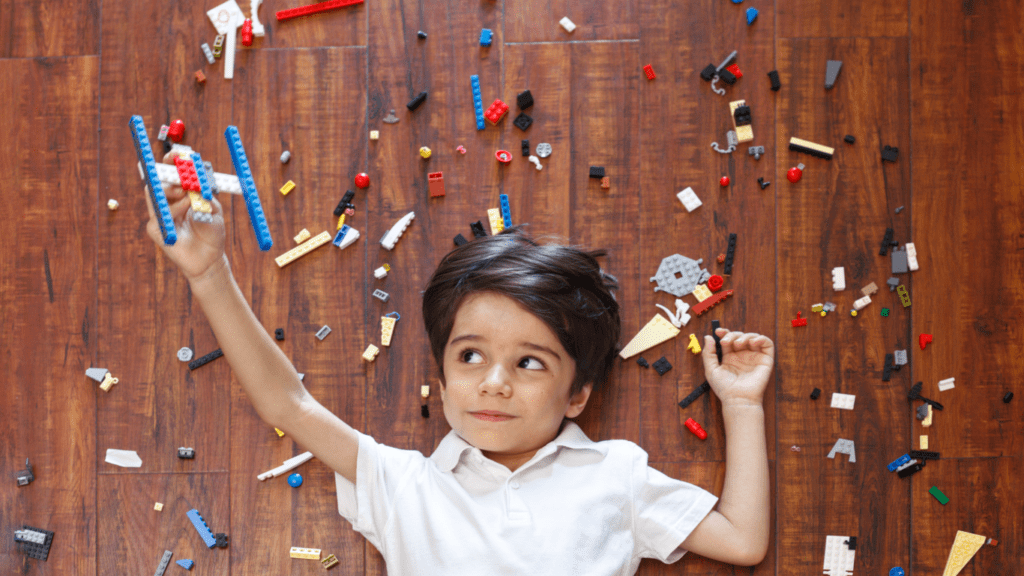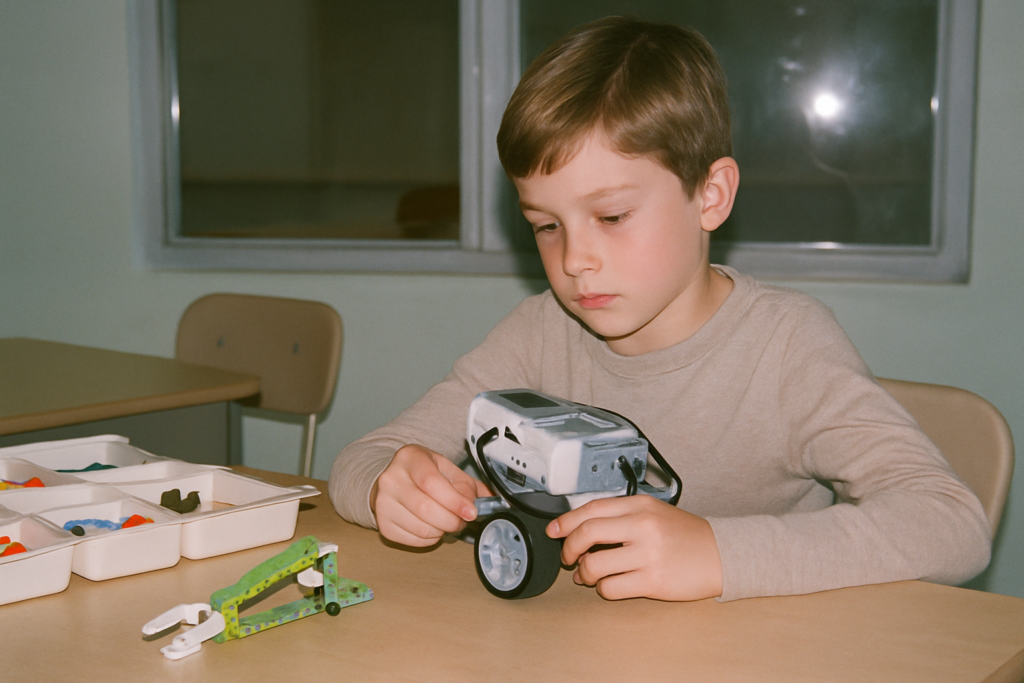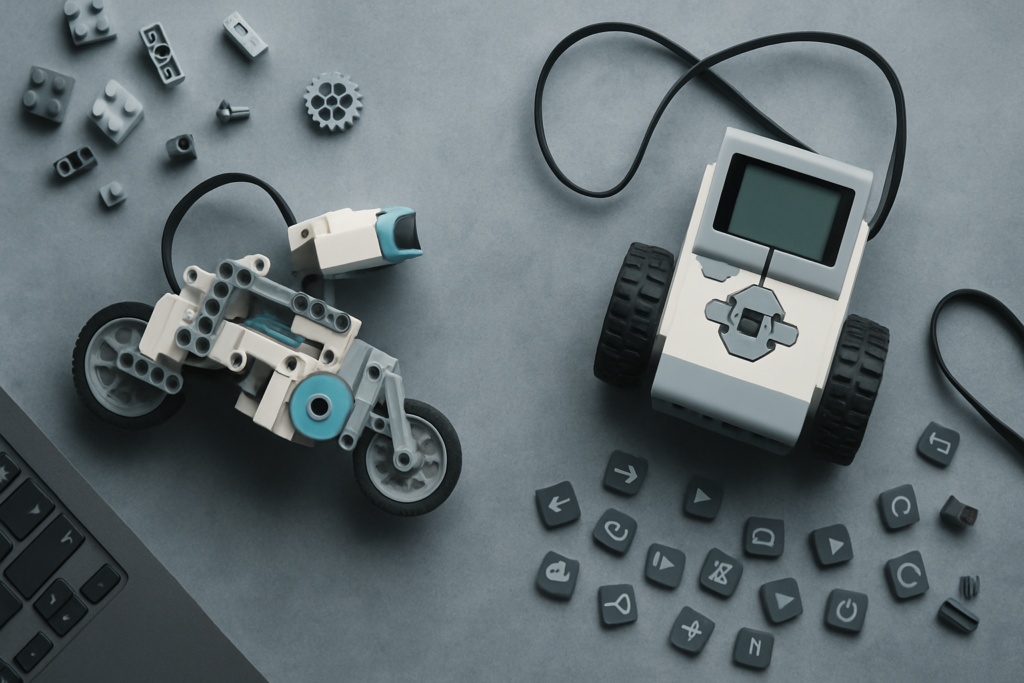The Importance of Hands-On Learning in STEM Education
Hands-on learning in STEM education engages kids, ensuring active involvement and comprehension.
Why Game Design Matters in STEM
Game design holds significance as it combines critical STEM (science, technology, engineering, math) elements.
Creating games requires children to use coding (programming languages), logic (sequencing tasks), and creativity (storytelling, graphic design).
For example, programming a character’s movement teaches syntax and logic, while designing levels cultivates spatial awareness.
The Benefits of Interactive Learning
Interactive learning boosts problem-solving skills and retention. Manipulating STEM toys that teach game design offers immediate feedback and real-world applications.
For instance, if a child codes a game character incorrectly, they see the result and adjust, reinforcing error troubleshooting and logical thinking.
Additionally, it cultivates collaboration since many game design tasks involve teamwork, enhancing social skills.
Top STEM Toys That Teach Game Game Design

STEM toys make complex topics like game design accessible to kids. Here are some top options for different age groups.
For Younger Kids
- Osmo Coding Awbie: This system introduces coding through physical blocks that control a character on an iPad screen. Kids learn sequencing, problem-solving, and basic programming concepts while playing.
- Cubetto: A screen-free coding toy perfect for preschoolers. Using a wooden robot and a control panel, children create sequences to guide Cubetto on adventures, reinforcing logic and storytelling.
- Roblox Studio: Teens can create their own games within the Roblox platform, learning LUA scripting, game design principles, and user experience design. The built-in tutorials and community resources provide comprehensive support.
- Bloxels: This platform allows kids to design, create, and play their video games. Using physical blocks to build game levels, they then scan them with a tablet to bring their creations to life. This teaches visual design and basic programming.
- Makecode Arcade: Microsoft’s Makecode Arcade enables kids to build retro-style games using block-based coding. It bridges the gap between simple blocks and more advanced text-based coding, catering to various skill levels.
These STEM toys offer engaging ways for children to delve into game design. Each option combines hands-on learning with critical STEM concepts, fostering creativity and problem-solving skills.
Key Features to Look For in STEM Toys
STEM toys teaching game design offer unique benefits beyond traditional learning. Identifying key features ensures maximum educational value.
Educational Value and Learning Outcomes
STEM toys must provide clear educational benefits. Look for toys incorporating essential skills like coding, logic, and problem-solving.
Evaluate if the toy teaches game design principles, such as storytelling, character development, and user interface design.
Ensure the toy aligns with learning outcomes that interest the child, like developing creativity or enhancing critical thinking.
Age Appropriateness and Safety
Identify STEM toys designed for the appropriate age group to ensure effectiveness and safety.
For younger children, choose toys free from small parts and with straightforward instructions, such as Osmo Coding Awbie.
Older kids can handle more complex sets, like Roblox Studio, requiring advanced coding and design skills. Check the materials used for non-toxicity and durability to guarantee a safe play environment.
Real-Life Success Stories
Many children have transformed their learning journeys through hands-on STEM toys that teach game design. Below are inspiring case studies showcasing the real-life impact of such toys.
- Osmo Coding Awbie: A 7-year-old girl used Osmo Coding Awbie and discovered a passion for coding. She learned fundamental coding concepts by guiding Awbie through various adventures, blending creative problem-solving with technology. Her parents reported improved logical thinking and increased engagement in STEM subjects at school.
- Cubetto: A 5-year-old boy explored Cubetto and developed an early interest in programming. By interacting with a friendly wooden robot and navigating it through stories and challenges, he grasped basic coding principles without screen exposure. His teachers noted enhanced spatial awareness and collaboration skills.
- Roblox Studio: An 11-year-old girl excelled using Roblox Studio, creating and sharing her own games. She mastered scripting languages like Lua, enriching her coding skills while designing intricate game worlds. This experience bolstered her confidence, prompting her to pursue more complex STEM projects.
- Bloxels: A 10-year-old boy tapped into his creativity with Bloxels, designing pixelated video games. He appreciated the physical and digital integration, constructing game layouts on a board before bringing them to life in an app. His parents observed significant growth in his creativity and storytelling abilities.
- Makecode Arcade: A 13-year-old teenager turned his hobby of gaming into a learning opportunity with Makecode Arcade. By developing various arcade games using Makecode’s visual block-based coding, he improved his understanding of game mechanics and programming logic while earning accolades in school coding competitions.
Choosing the Right STEM Toy for Your Child
Identifying the best STEM toy for your child involves evaluating multiple aspects to ensure it aligns with their interests and developmental stage. An optimal choice leverages both educational and entertainment value.
Factors to Consider
When selecting a STEM toy, consider the following:
- Educational Value: A toy should offer a solid learning foundation. For example, Osmo Coding Awbie teaches basic coding concepts.
- Age Appropriateness: It’s important to choose toys suitable for your child’s age. Cubetto is perfect for preschoolers, while Bloxels targets older kids.
- Safety: Ensure the toy has passed safety standards. Check for certifications and user reviews mentioning safety.
- Interests and Preferences: Knowing your child’s interests helps. If they love games, Makecode Arcade provides relevant engagement.
Tips for Engaging Kids with STEM Toys
To maximize the benefits of STEM toys, employ the following strategies:
- Set Goals: Help kids set achievable goals. They might aim to complete a level in Roblox Studio within a week.
- Incorporate Playtime: Make learning fun by integrating it into their playtime routine. Use Cubetto during a regular play session to teach navigation.
- Encourage Creativity: Allow children to explore and create. Bloxels lets them design their own games, stimulating innovation.
- Provide Support: Offer guidance when needed. Be there when they face challenges in Makecode Arcade, fostering problem-solving skills.
By thoroughly considering these aspects, you’ll select a STEM toy that’s both educational and engaging, setting your child up for a fruitful learning journey.



